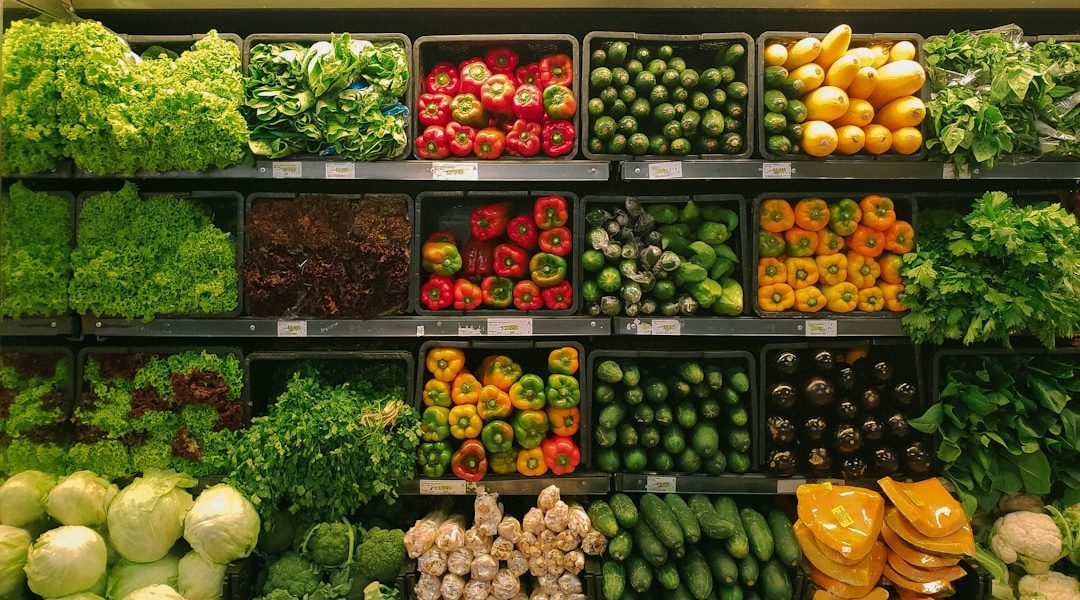Chitterlings, also known as chitlins, have a long and storied history that dates back to ancient times. The tradition of consuming chitterlings can be traced back to the Roman Empire, where they were considered a delicacy and were often enjoyed by the upper class. The practice of consuming chitterlings spread throughout Europe and eventually made its way to the Americas through the transatlantic slave trade.
In the United States, chitterlings became a staple in Southern cuisine, particularly among African American communities. Enslaved Africans were often given the less desirable parts of the pig, including the intestines, and they developed innovative ways to clean and prepare chitterlings to make them palatable. Over time, chitterlings became a symbol of resilience and resourcefulness within African American culture, and they continue to hold a special place in the culinary traditions of the American South.
Despite their humble beginnings, chitterlings have evolved into a sought-after delicacy in many cultures around the world. Today, they are enjoyed in various cuisines, from soul food in the United States to traditional dishes in Latin America and Asia. The history of chitterlings is a testament to the ingenuity of people in transforming humble ingredients into delicious and beloved dishes that have stood the test of time.
Chitterlings have come a long way from their origins as a humble peasant food to becoming a cherished delicacy enjoyed by people from diverse cultural backgrounds. The history of chitterlings is a testament to the resilience and creativity of communities that have transformed this once overlooked ingredient into a beloved culinary tradition. As chitterlings continue to be celebrated and enjoyed around the world, their rich history serves as a reminder of the enduring power of food to bring people together and preserve cultural heritage.
Key Takeaways
- Chitterlings have humble beginnings but have become a sought-after delicacy in many cultures.
- Traditional methods and techniques are used to clean and prepare chitterlings for a flavorful dining experience.
- Chitterlings can be cooked using various methods such as boiling, frying, and slow cooking to enhance flavor and texture.
- Pair chitterlings with complementary flavors and ingredients to create a delicious and satisfying meal.
- Chitterlings offer a range of health benefits and can be part of a balanced diet.
The Art of Cleaning and Preparing Chitterlings
Cleaning and preparing chitterlings is a time-honored tradition that requires patience, skill, and attention to detail. The process begins with thoroughly washing the chitterlings in cold water to remove any impurities and residue. This step is crucial for ensuring that the chitterlings are clean and safe to consume. Once they have been washed, the chitterlings are typically soaked in a mixture of water and vinegar or lemon juice to help neutralize any lingering odors and further cleanse the intestines.
After soaking, the chitterlings are meticulously inspected and any remaining debris or fat is carefully removed. This process can be labor-intensive, but it is essential for achieving tender and flavorful chitterlings. Once cleaned, the chitterlings are ready to be cooked according to the desired recipe, whether it’s boiling, frying, or slow cooking. The art of cleaning and preparing chitterlings is a time-honored tradition that requires skill and dedication, but the end result is a delicious and satisfying dish that is well worth the effort.
The art of cleaning and preparing chitterlings is a labor of love that has been passed down through generations. It requires patience, attention to detail, and a deep understanding of traditional techniques. While the process may seem daunting to those unfamiliar with it, mastering the art of cleaning and preparing chitterlings is a rewarding experience that allows for the creation of flavorful and enjoyable dishes that honor culinary traditions from around the world.
Cooking Techniques
There are several cooking techniques that can be used to prepare chitterlings, each of which can enhance the flavor and texture of this savory delicacy. Boiling is a popular method for cooking chitterlings, as it helps to tenderize the intestines and remove any remaining impurities. After boiling, the chitterlings can be seasoned with herbs and spices to add depth of flavor.
Frying is another common cooking technique for chitterlings, which results in crispy and golden-brown intestines that are rich in flavor. Slow cooking is also a popular method for preparing chitterlings, as it allows the intestines to become tender and succulent while absorbing the flavors of the cooking liquid. Whether boiled, fried, or slow-cooked, each cooking technique offers a unique way to enjoy the rich and savory taste of chitterlings.
Exploring different cooking techniques for chitterlings allows for a diverse range of flavors and textures to be achieved. Whether boiled, fried, or slow-cooked, each method offers its own unique way to enjoy the rich and savory taste of chitterlings. By experimenting with different cooking techniques, it is possible to discover new and exciting ways to prepare this beloved dish while honoring traditional culinary practices.
Pairing Chitterlings with Complementary Flavors
| Flavor | Complementary Pairing |
|---|---|
| Sweet | Apple sauce |
| Acidic | Vinegar-based hot sauce |
| Savory | Garlic mashed potatoes |
| Spicy | Creole seasoning |
Chitterlings have a rich and savory flavor that pairs well with a variety of complementary ingredients. In Southern cuisine, chitterlings are often seasoned with aromatic herbs such as thyme, bay leaves, and parsley, which add depth and complexity to the dish. Onions, garlic, and bell peppers are also commonly used to enhance the flavor of chitterlings and create a well-rounded and satisfying meal.
In Latin American cuisine, chitterlings are often paired with spicy peppers, tomatoes, and cilantro to create vibrant and flavorful dishes. In Asian cuisine, chitterlings are often seasoned with soy sauce, ginger, and scallions to create savory and aromatic flavors. Whether prepared in traditional Southern style or infused with international flavors, chitterlings can be paired with a wide range of complementary ingredients to create delicious and satisfying meals that celebrate diverse culinary traditions.
Pairing chitterlings with complementary flavors allows for a diverse range of dishes to be created that honor traditional culinary practices while also embracing new and exciting flavors. By experimenting with different ingredients and seasonings, it is possible to discover unique ways to enjoy the rich and savory taste of chitterlings while creating delicious and satisfying meals that celebrate diverse cultural traditions.
Health Benefits of Chitterlings
Despite their rich flavor, chitterlings also offer a range of health benefits. Chitterlings are high in protein and low in carbohydrates, making them a nutritious option for those looking to maintain a balanced diet. They are also a good source of essential nutrients such as iron, zinc, and vitamin B12, which are important for maintaining overall health and well-being.
Chitterlings are also rich in collagen, which is beneficial for supporting joint health and promoting healthy skin. Additionally, they contain beneficial amino acids such as glycine and proline, which play a role in supporting digestive health and overall immune function. While it is important to consume chitterlings in moderation due to their high cholesterol content, when enjoyed as part of a balanced diet, they can offer a range of health benefits that contribute to overall well-being.
Despite their reputation as a rich and indulgent dish, chitterlings offer a range of health benefits that make them a nutritious addition to a balanced diet. From their high protein content to their beneficial nutrients such as iron and zinc, chitterlings provide valuable nutritional support for overall health and well-being when enjoyed in moderation as part of a varied diet.
Where to Find Delicious Chitterlings for Sale

For those looking to enjoy delicious chitterlings, there are many local businesses that offer high-quality options for sale. Local butcher shops and specialty meat markets often carry fresh chitterlings that have been carefully cleaned and prepared according to traditional methods. Additionally, farmers’ markets and food festivals are great places to find locally sourced chitterlings that support small-scale producers and offer unique flavors.
In addition to local businesses, there are also online retailers that offer high-quality chitterlings for sale, providing convenient access to this beloved dish for those who may not have local options available. By supporting local businesses and small-scale producers, it is possible to enjoy delicious chitterlings while also contributing to sustainable food systems and preserving culinary traditions for future generations.
Whether shopping at local butcher shops or exploring online retailers, there are many options available for finding delicious chitterlings for sale. By seeking out high-quality sources that support local businesses and small-scale producers, it is possible to enjoy flavorful and satisfying chitterlings while also contributing to sustainable food systems and preserving culinary traditions for future generations.
Exploring Chitterlings in Different Cultures
Chitterlings are enjoyed in various cuisines around the world, each with its own unique traditions and flavors. In Southern cuisine in the United States, chitterlings are often prepared with classic seasonings such as thyme, bay leaves, and garlic to create rich and savory dishes that celebrate African American culinary heritage. In Latin American cuisine, chitterlings are often seasoned with spicy peppers, tomatoes, and cilantro to create vibrant and flavorful dishes that reflect diverse cultural influences.
In Asian cuisine, chitterlings are often prepared with soy sauce, ginger, and scallions to create savory and aromatic flavors that showcase traditional cooking techniques. In European cuisine, chitterlings are enjoyed in various forms such as sausages or stews that highlight regional ingredients and culinary traditions. By exploring the diverse cultural traditions surrounding chitterlings, it is possible to discover new and exciting ways to enjoy this beloved dish while celebrating culinary diversity around the world.
Chitterlings are celebrated in various cuisines around the world, each with its own unique traditions and flavors that reflect diverse cultural influences. By exploring different cultural traditions surrounding chitterlings, it is possible to discover new and exciting ways to enjoy this beloved dish while celebrating culinary diversity around the world. Whether prepared in classic Southern style or infused with international flavors, chitterlings offer a delicious opportunity to explore diverse culinary traditions while honoring the rich history of this beloved dish.
If you’re interested in learning more about the history and cultural significance of chitterlings, check out this fascinating article on www.beadprovenance.com. This article delves into the origins of chitterlings and their place in traditional Southern cuisine, providing valuable insight into the culinary heritage of this unique dish.
FAQs
What are chitterlings?
Chitterlings, also known as chitlins, are the small intestines of a pig, typically used in traditional Southern cuisine.
Are chitterlings safe to eat?
When properly cleaned and cooked, chitterlings are safe to eat. It is important to thoroughly clean and cook chitterlings to avoid the risk of foodborne illness.
Where can I find chitterlings for sale?
Chitterlings can often be found for sale at specialty butcher shops, some grocery stores, and online retailers.
How should I clean and prepare chitterlings?
Chitterlings should be thoroughly cleaned by rinsing them multiple times in cold water and removing any excess fat and debris. They should then be boiled and simmered until tender, typically with the addition of seasonings and aromatics.
What dishes can I make with chitterlings?
Chitterlings are commonly used to make dishes such as chitterlings and gravy, chitterlings stew, and chitterlings and rice. They are often seasoned with ingredients such as onions, garlic, and various spices.




